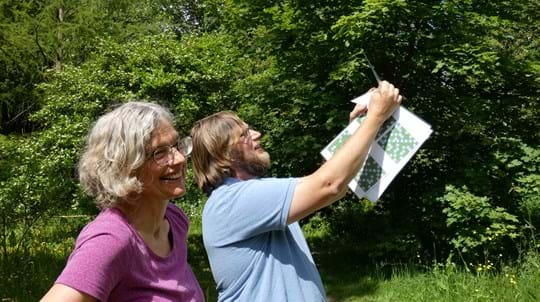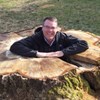
About us

Fera Science Ltd
Observatree it is a part of a network of tree health early warning systems in the UK and beyond. The project is built on a tripod of surveillance activities-firstly, checking for a list of 21 priority tree pests and diseases, secondly, establishment and checking of sentinel tree plots and finally general surveillance of tree health.
Of these, the final activity is the most challenging as it requires a wide-ranging observational skills and experience in discriminating healthy from sick-looking trees. The complexity of this task should not be underestimated, and it take years of experience before anybody can call themselves proficient. When I first started work as a diagnostician of plant health, I was advised by my very experienced boss that it would take me at least five years to become proficient at my job. I think it was only after 10 years that I became truly confident in my diagnostic ability! Therefore, it is not surprising that all of us need help in diagnosing tree health; the chance to share thoughts and pictures with colleagues with a diversity of experience is part of any diagnostic process. For me, one of the great successes of the project has been the support we give to and receive from volunteers through the Pest and Disease Network Group; it epitomises everything fantastic about a tree health early warning system driven by citizen scientists supported by professionals."
Image of ring barked young tree from the forum.
The Pest and Disease Network Group can be found on the projects volunteer network area of the website, which is a restricted area and only available to registered volunteers and project staff. There are 16 discussion groups, mainly for the different regions, but there are two specialist Groups; one for Pests and Diseases and the other for Tree Identification. The P&D Network Group is by far the biggest and most active with 72 members, 275 topics and over a thousand voices since its inception in July 2015. The honour goes to lead volunteer Richard who posted the first volunteer topic, about Oriental Chestnut Gall Wasp, and he remains an active member of the Network Group. We have seen a significant increase in the past two years, with 62 members joining the original founding members. This has resulted in a major increase in topics, in the first year there was only 14 posted, but since 2019, 131 topics have been posted! Although I have been part of the project from the beginning, I only joined the Network Group in October 2018, so it’s never too late to join.
The Network Group works by someone posting a Topic where they need help, usually a brief description of the problem and hopefully with some pictures describing what they’ have seen. This then leads to a discussion with project partners providing scientific advice, but increasingly other volunteers also adding helpful thoughts and technical advice. I think this has been one of the greatest achievements of the Observatree project, demonstrating the increasing knowledge and confidence of the volunteers and the value of peer-to-peer learning. Additionally, there are a number of volunteers with a professional background in woodland management, forestry or arboriculture who are also able to contribute to finding a solution.
Direct access to expertise like this is a huge advantage to volunteers and a great help for everyone involved in the fight against tree pests and diseases. But it isn’t all one way traffic from professionals to volunteers. I have learnt a huge amount from the volunteers in the information that they provide. A good example of this would be a very interesting exchange started by Kevin Anderson in June 2018 concerning abnormal bleeds on an ash. In total, over a two month period, there were five voices and 29 posts with contributions from lead volunteer Andy as well as Suzy and Max from Forest Research resulting in some fascinating information about hornet damage as well as an excellent YouTube clip. This interesting case also demonstrates the benefit of looking back through previous topics to see whether there is something similar to what you’re interested in. The network group forum is in itself becoming a library of useful information for volunteers, effectively cataloguing issues and answers for the future reference of those who join the project.
Not surprisingly there is a lot of traffic about specific hosts, focusing mainly on ash, oak, pine, cherry and both sweet and horse chestnut, topics about acute oak decline, ash dieback, bleeding trees etc. The record Topic to date has been a series of posts about stains on a tree that has had seven voices and 32 posts. This in turn, led to the development of the e-learning resource about bleeding trees, which again can be found on the website."
The Network Group has also been used to post about events or webinars which might be of general interest so again another good source of information. In addition to this it allows our volunteers and project staff an open channel of communication for this information exchange and over the course of the project so far has started to connect the network more closely to each other.
Finally, there are two heroes of this Network Group, firstly the elusive and mysterious wtdigital (sadly, I only realised recently this was short for Woodland Trust digital and the volunteer manager!); and the ever knowledgeable Suzy who is able to access extensive information from her Forest Research colleagues.
So if you are a volunteer, and are struggling to understand the cause of any tree health issues, then get yourself signed up the Pest and Disease Discussion Network Group and start posting. If you aren’t already a volunteer and you think you could add to our network, then why not consider signing up? Look out for information on our next recruitment phase on the website or use the contact us page to register your interest. We look forward to hearing from you.